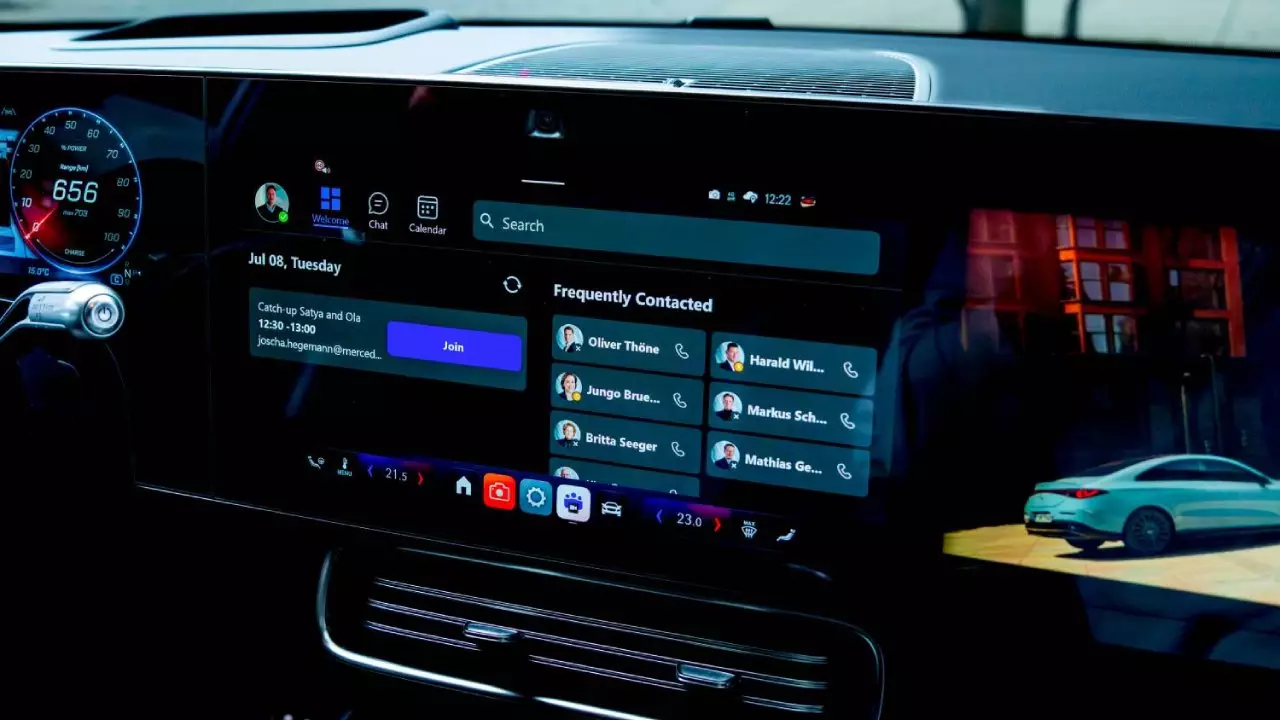Mercedes-Benz consistently positions itself at the forefront of automotive innovation, blending luxury with cutting-edge technology. Recently, the company unveiled an audacious update that allows in-car Teams video streaming—enabling drivers to broadcast themselves during meetings while behind the wheel. This development signals a departure from traditional safety norms, reflecting a growing trend to merge work and personal life seamlessly, even in the most unlikely environments. However, this blurring of boundaries raises critical questions about safety, practicality, and the very essence of technological responsibility.
What stands out immediately is the inherent contradiction in the feature’s premise. On one hand, Mercedes emphasizes safety by limiting video feeds to the driver’s camera, preventing the driver from viewing shared screens. Conversely, the prospect of drivers live-streaming their activity—be it a casual chat, nasal exploration, or, worse, an accident—undermines this safety narrative. The company claims the camera can be activated without jeopardizing safety, but the reality is that the temptation to look, interact, or be distracted remains an open concern. Such features seem designed more to signal technological prowess than to genuinely enhance or protect the user.
This move into live video streaming from a moving vehicle appears driven more by a desire to demonstrate innovation than by a clear understanding of user needs or safety constraints. It’s difficult to see the tangible benefits of being visible during a meeting while behind the wheel, especially considering that, by design, the system ensures the driver cannot see other participants’ videos. The core issue—is this actually improving productivity or just creating needless exposure? Or perhaps it’s a marketing stunt aimed at impressing tech-savvy consumers and corporate clients alike.
Potential Pitfalls and Ethical Concerns
While Mercedes reassures that activation settings, such as turning off the camera, prevent distractions, the risks are palpable. Live video from a moving vehicle can inadvertently reveal far more than intended. For instance, drivers might be tempted to glance at their own camera feed, or worse, accidentally showcase personal or sensitive surroundings. The possibility of unintentional sharing—such as an accidental glimpse into the driver’s cabin or even a live accident—cannot be ignored.
Moreover, the integration of generative AI through Microsoft 365 Copilot pushes the narrative from “innovative” to “risky.” AI models, despite their sophistication, are fallible and can produce unpredictable outputs. Relying on AI for tasks like email summarization or client detail retrieval while moving introduces an additional layer of complexity and potential distraction. If the AI misinterprets a prompt, or if voice commands are misunderstood, the result could be a dangerous misstep. The assumption that this technology will reliably aid drivers without creating new hazards is overly optimistic, bordering on reckless.
The broader ethical implications also demand scrutiny. Is it appropriate to encourage multitasking—working, communicating, and even streaming—while in control of a high-performance vehicle? The cultural shift towards normalizing such behavior might lead to an erosion of established safety standards, ultimately compromising driver and pedestrian safety. Technology should be a tool for enhancement, not an enabler of distraction and risky behavior.
Innovation Versus Responsibility
Mercedes-Benz’s push into integrating Teams, AI, and live video in their vehicles signals a bold vision of the connected car as a hybrid workspace. Yet, it’s essential to recognize that innovation is not an end in itself; it must be balanced with responsibility. The automotive industry has a long history of introducing new features that later prove problematic—early infotainment systems, autonomous driving claims, and safety features that failed under certain conditions—these lessons should serve as cautionary tales.
In this context, the allure of being “the first” to offer in-car Teams streaming and generative AI is compelling, but it risks overshadowing pragmatic safety considerations. As users, we should question whether comfort and convenience are worth the potential increase in risk. Just because technology can do something doesn’t mean it should.
Ultimately, Mercedes’s latest offerings exemplify a broader societal debate: how far are we willing to push the boundaries of innovation, and at what cost? The vehicle of the future might be a mobile office, but it must also be a safe haven. Balancing cutting-edge technology with sound safety principles will determine whether these developments lead us toward a truly smarter, safer driving experience—or spiral into a future where distraction and risk rule the roads.

